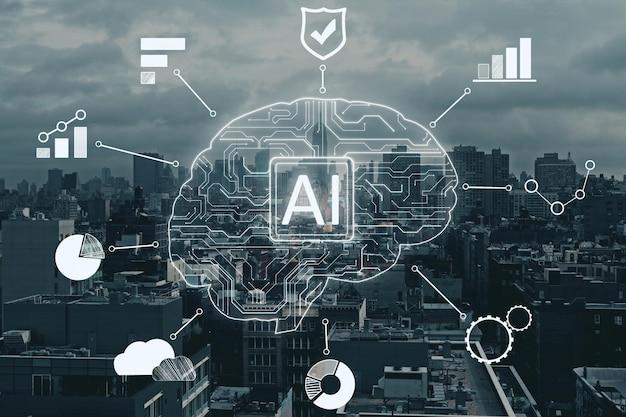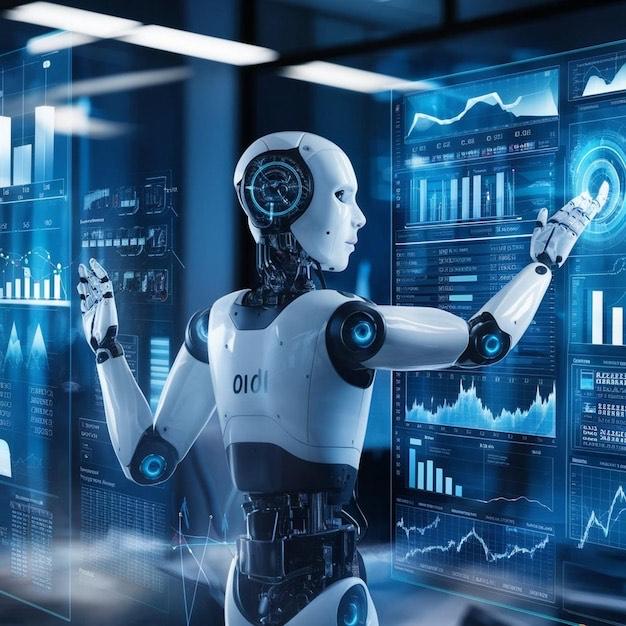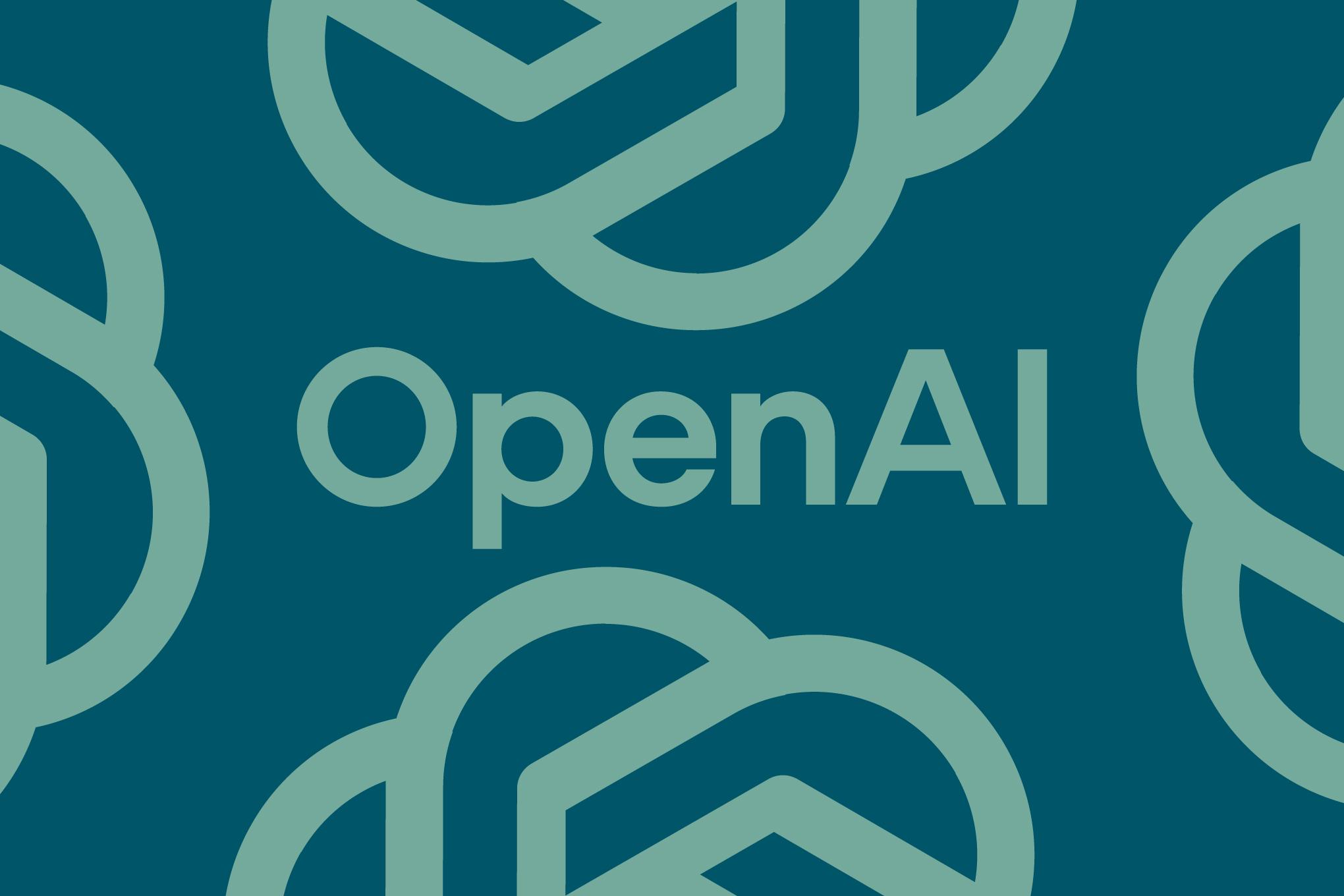
AI Adoption Across Industries
AI Adoption Across Industries: A Comprehensive Analysis
The world is experiencing a seismic shift as artificial intelligence rapidly transforms various industries. According to observations from Alexander Duval, head of Europe Tech Hardware & Semiconductors at Goldman Sachs Research, AI models are becoming cheaper and more powerful, driving widespread adaptation across sectors from healthcare to manufacturing.
The AI Revolution: Transforming Key Industries
At the heart of this transformation are industries like healthcare, retail, manufacturing, and education. Generative AI, a sophisticated type of artificial intelligence capable of creating new content autonomously, is revolutionizing operational processes and business models. In healthcare, AI is making remarkable waves by helping surgeons tackle intricate medical challenges with unprecedented efficiency, utilizing decades of accumulated video data to enhance modern medical procedures.
The retail sector is witnessing robots equipped with generative AI revolutionizing stock management systems. These advanced systems not only prevent costly stock-outs but also significantly boost product uptake rates, delivering impressive three-to-four-fold returns on investment within mere months of implementation. Manufacturing facilities are now operating round-the-clock with thousands of autonomous robots equipped with sophisticated AI capabilities, substantially cutting operational costs while amplifying overall efficiency.
Economic Shifts: Evolving Cost Structures and Capabilities
The financial landscape of AI deployment is undergoing dramatic evolution. With significant advances in Large Language Models, the costs associated with deploying comprehensive AI systems are steadily dropping, even as demand for increasingly sophisticated models continues to rise. The industry's substantial capital investment focuses strategically on utilizing enhanced compute power for developing advanced multimodal systems capable of processing complex combinations of video, speech, and image data.
AI's capabilities are reaching unprecedented heights, demonstrated by remarkable milestones such as earning medals in prestigious Math Olympiads and solving complex reasoning problems. Multimodal AI systems, designed to process diverse data types including video, speech, and images simultaneously, continue to establish their presence in critical industries like logistics and healthcare, enhancing operational efficiency while fostering innovative human-robot collaboration models.
Agentic AI: Beyond Traditional Automation
One emerging star in the expanding AI ecosystem is agentic AI, representing a paradigm shift in artificial intelligence applications. This advanced type of AI operates autonomously, completing complex tasks and managing entire workflows like a highly capable digital employee. Agentic AI systems demonstrate the ability to take specific actions to reach defined goals, functioning much like sophisticated digital workers with decision-making capabilities.
However, several significant barriers continue to exist, ranging from infrastructure limitations and integration challenges to critical trust issues, which are collectively slowing widespread acceptance and deployment across industries. These challenges include the need for robust infrastructural frameworks and the development of reliable trust mechanisms for AI-generated outputs.
Productivity Revolution: Measurable Impact Across Sectors
The AI adoption wave is generating substantial productivity boosts across multiple sectors. AI is dramatically accelerating software development processes by up to sixfold and effectively managing approximately 50% of enterprise support workloads. Advanced LLMs have demonstrated remarkable abilities to outperform experienced programmers, generating significant portions of new code lines with enhanced efficiency and reduced error rates.
In the entertainment industry, the strategic incorporation of AI into visual effects production yields results ten times faster than traditional methods, revolutionizing content creation timelines. AI is fundamentally reshaping software development and enterprise support functions, dramatically increasing operational efficiency while reducing costs. Yet significant obstacles remain, particularly concerning massive power demands and the critical need for comprehensive guardrails to ensure content reliability and ethical implementation.
Infrastructure Challenges: Power and Precision Requirements
AI's appetite for power is staggering, with modern data centers demanding energy levels comparable to major metropolitan areas. Some facilities consume as much power as entire cities, with single 500-megawatt data centers requiring energy equivalent to what 500,000 homes typically use. This enormous energy requirement necessitates innovative power generation methods and advanced grid efficiency solutions.
Effective AI deployment requires sophisticated energy solutions and meticulous guardrails, including essential human oversight and advanced technical measures like prompt engineering and comprehensive output filtering systems. These safeguards ensure responsible AI use through safety classifiers, citation systems, source links, and user feedback mechanisms that enhance reliability while enabling continuous improvement.
Technological Innovation: The Hardware Frontier
Innovations in semiconductors and advanced hardware play crucial roles in addressing AI's growing computational demands. European companies are positioned at the forefront of this technological revolution, providing essential lithography tools and developing innovative hybrid bonding processes for creating energy-efficient chip production systems. These revolutionary processes create semiconductors that consume significantly less power while generating substantially less heat.
The development of semiconductors using advanced materials such as silicon carbide and gallium nitride is gaining significant momentum, driving further enhancements in energy efficiency and performance capabilities. These materials represent critical advances in power efficiency, catapulting AI capabilities to previously unattainable heights while addressing sustainability concerns.
Future Horizons: Next-Generation AI Technologies
The future of AI development promises even more groundbreaking innovations. The next phase might witness revolutionary leaps into quantum computing integration and advanced photonics applications, promising profound changes in AI training methodologies and inference capabilities. Future progress is anticipated in sophisticated reasoning models and quantum computing integration, potentially unlocking unprecedented realms of data for comprehensive AI training.
Photonic technology represents a particularly promising frontier innovation, utilizing light-based data transfer systems that could dramatically reduce energy consumption by as much as 70%. These photonic interconnects promise to significantly slash energy requirements while substantially refining AI cluster performance and reliability. As AI technology continues its rapid advancement, the ripple effects across industries forecast a future characterized by boundless potential and revolutionary productivity enhancements that will reshape how we work, create, and solve complex global challenges.
https://www.goldmansachs.com/insights/articles/how-industries-are-putting-ai-to-work





